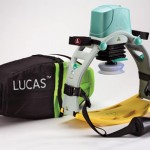A bone fracture is never a good thing. Maybe your friend fell off the bike path or a loved one tripped over the curb. Whatever the case, it may be up to you to provide first aid for fractures he may have received.
But don’t panic; let your CPR and first aid training kick in. In all cases, it’s important the patient gets emergency medical attention—but there are steps you can take to ensure his safety while the ambulance is on its way.
Here are some tips for providing basic first aid for fractures:
What’s the Difference Between a Bone Fracture and a Bone Break?
The simple answer is there is no difference. A bone fracture identifies as any break in the bone and is the term more commonly accepted in medical fields. While you and I may call it a broken bone, they’re really one and the same. This clears up matters a lot when it comes to knowing whether to distribute first aid for fractures or first aid for broken bones!
First Steps for Delivering Fracture First Aid
If he’s not breathing, you may begin adult CPR on him (or child CPR if younger) before applying fracture first aid. Apply pressure to any open wounds with gauze or a sterile bandage, but do not attempt to push exposed bone back in.
Some things to remember:
- Don’t move the patient. Unless you need to move him to avoid further injury, such as from the middle of the street, keep him where he is. This is to avoid causing further internal damage.
- Ice can help relieve pain. This can be an important part of fracture first aid to help the patient not only physically but mentally as well. Just remember to wrap the ice in cloth first instead of putting it on directly.
- Call an ambulance. Ultimately, there may be only so much you can do. In particularly serious accidents, even your first aid certification may not offer all the help an injured patient needs.
If you are out in the wilderness and don’t have emergency access to fracture first aid, you may have to make a splint. This will immobilize the injured area, stopping it from moving and causing more damage. If you’re first aid certified, you’ll know how to provide this.
How to Ensure You’re Prepared for Fracture First Aid
Are YOU prepared to provide immediate first aid for fractures? You’d be surprised how many Americans are not.
CPR and first aid certification courses can provide what all the info you need to potentially save someone’s life. It’s as simple as that. Don’t let another day go by unprepared—get certified today and be a hero!


